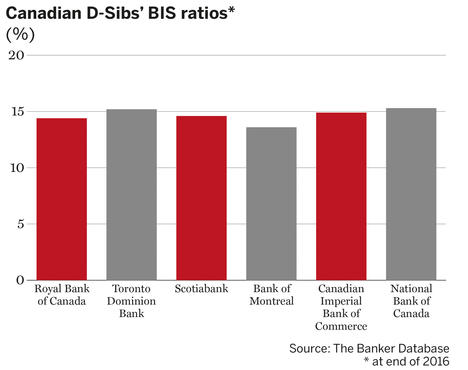Data collected by The Banker suggests Canada’s biggest banks will satisfy the latest round of capital requirements with ease.
Canada is moving forward with plans to implement the global Total Loss-Absorbing Capacity (TLAC) framework on its domestically systemically important banks (D-Sibs). The rules, which require banks to hold enough bailin-able debt not to need government support during resolution, are expected to take effect in the first half of 2018.
Analysts expect the six D-Sibs to satisfy the incoming requirements with relative ease, by replacing their maturing senior notes with TLAC-eligible debt. Data collected by The Banker supports assertions that Canada’s banks are unlikely to struggle with the latest round of capital rules.
Their capital adequacy ratios – otherwise known as the Bank for International Settlement (BIS) ratios – are a good yardstick. These metrics all sit comfortably above the 8% minimum threshold set by Basel III.
Between 2015 and 2016 all the biggest banks increased their Tier 1 and Tier 2 capital buffers, with the exception of Royal Bank of Canada and National Bank of Canada, which saw their Tier 2 levels dip slightly.
All statistics sourced from www.thebankerdatabase.com



